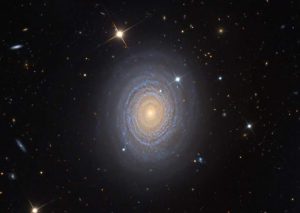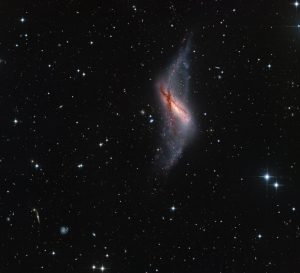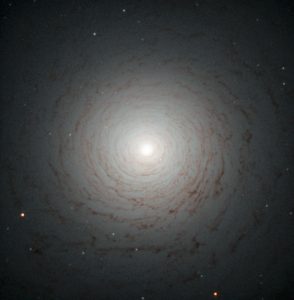costellazione dei Pesci
Concentricità
NGC 488 è una splendida galassia a spirale che si trova nella costellazione dei Pesci, ad una distanza di circa 90 milioni di anni luce dalla Terra. Continua a leggere
NGC 660: una galassia ad anello polare
Questa bella immagine riprende NGC 660, una galassia ad anello polare ad oltre 40 milioni di anni luce di distanza nella costellazione dei Pesci. Le galassie ad anello polare sono rare e sfoggiano una considerevole presenza di stelle, gas e polvere che orbitano in anelli notevolmente inclinati rispetto al piano del disco galattico. Continua a leggere
Una misteriosa antica spirale
Questa spettrale immagine ripresa dal telescopio Hubble rivela l’impressionante centro della galassia NGC 524. È una galassia di tipo lenticolare, uno stadio intermedio nell’evoluzione galattica tra le ellittiche e le galassie a spirale; si trova nella costellazione dei Pesci, a circa 90 milioni di anni luce dalla Terra. Continua a leggere


